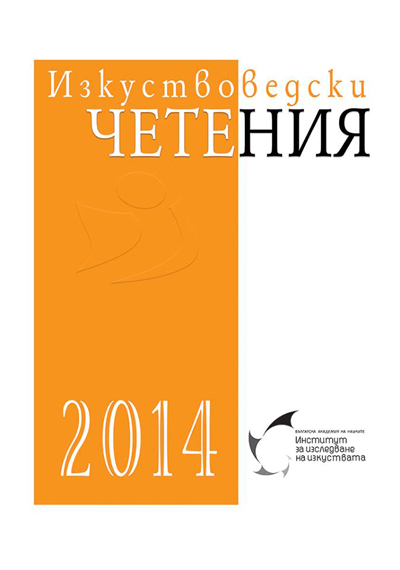Crossing the Cultural Divide: the Collaborative Public Art Projects of Velislav Georgiev
Crossing the Cultural Divide: the Collaborative Public Art Projects of Velislav Georgiev
Author(s): Anita PischSubject(s): History, Fine Arts / Performing Arts, Cultural history, Visual Arts, Local History / Microhistory
Published by: Институт за изследване на изкуствата, Българска академия на науките
Keywords: Velislav Georgiev; Bulgaria-Australia; sculpture; ‘play sculptures’; creative act; interact; public environment.
Summary/Abstract: This paper examines the role of Bulgarian-born artist, Velislav Georgiev (1957 –), in transforming both his local and the wider Victorian landscape through his accessible and interactive artworks which invite the audience to experience the art object by engaging all five senses. Georgiev’s art practice in Australia stretches over 30 years and encompasses sculpture, painting, public art, furniture and architectural detail. Georgiev has created more than 28 public sculptures through which he engages in ongoing dialogue with a broad audience of all ages and backgrounds. These include a number of ‘play sculptures’, which encourage people to touch, feel, and immerse themselves in the pieces and also a number of collaborative pieces with a variety of ‘communities’ in which children, senior citizens, and members of disadvantaged groups have participated in the creative act. A current ongoing project in his home town of Ballan in western Victoria aims to bring the invisible to visibility by drawing attention to the workings of the wind. Georgiev is a founding figure in Ballan’s ‘1000 Weathervanes in Ballan’ project which has the ambitious aim of setting up 1,000 pieces of wind art in the draughty town. In March 2011 Georgiev’s Omnibus studio/ gallery participated in a joint exhibition with the National Museum of Earth and Man in Sofia, which grew out of the notion that Bulgaria and Australia are at the ‘opposite ends of the earth,’ so that if one were to drop a stone through the centre of the earth in Bulgaria, it ‘would most likely land in central Australia.’
Journal: Изкуствоведски четения
- Issue Year: 2014
- Issue No: 9
- Page Range: 453-461
- Page Count: 9
- Language: English
- Content File-PDF

